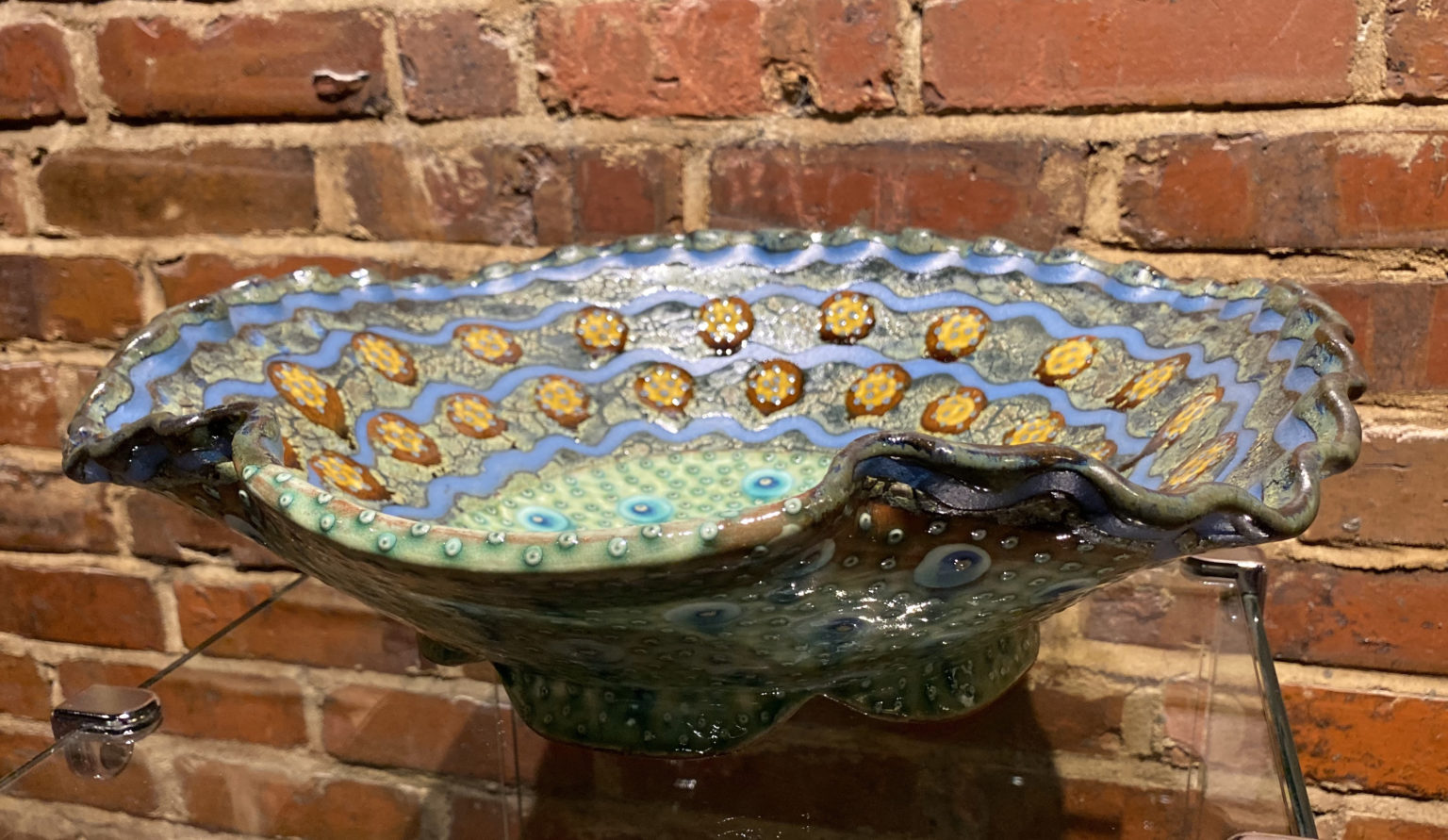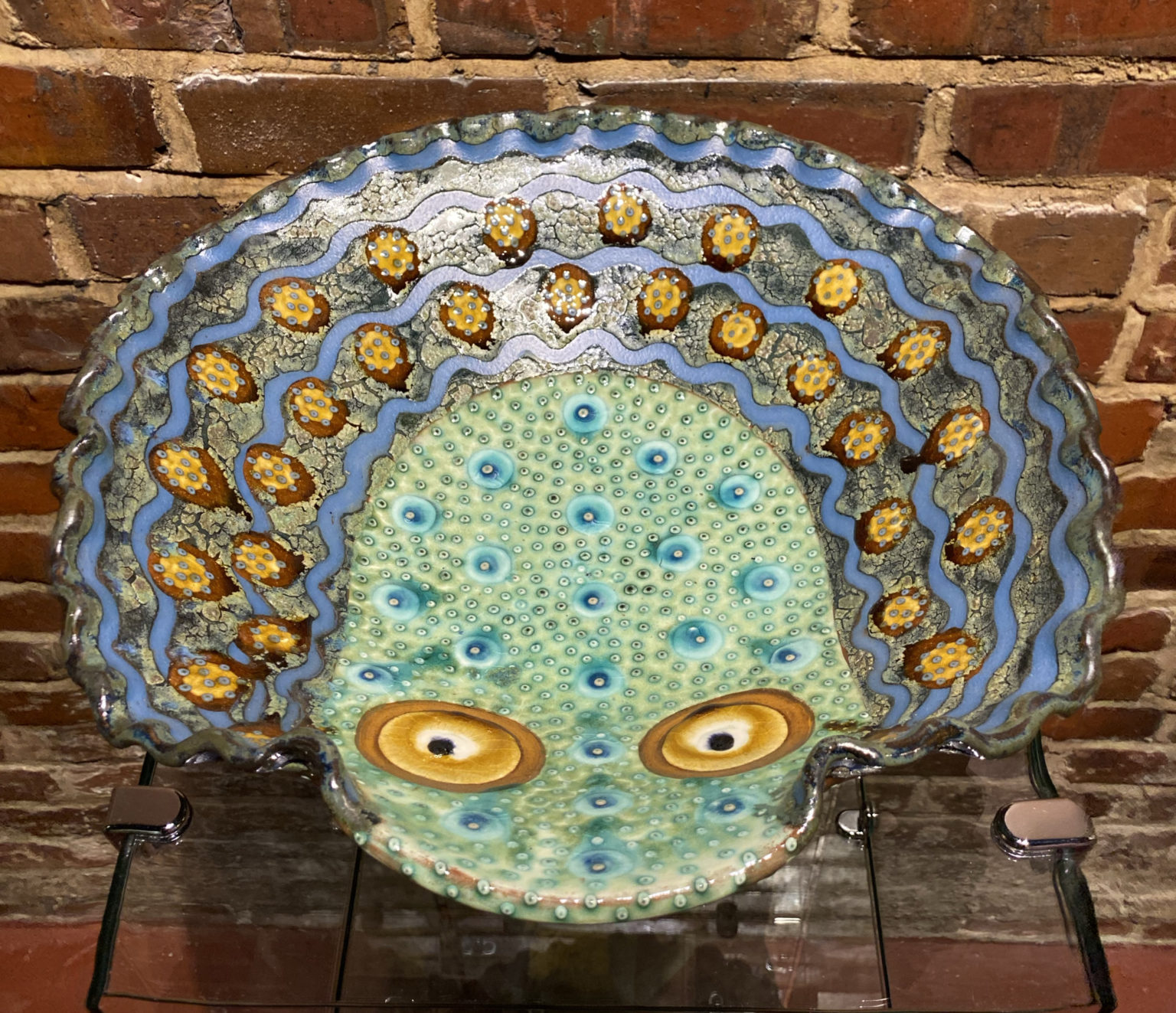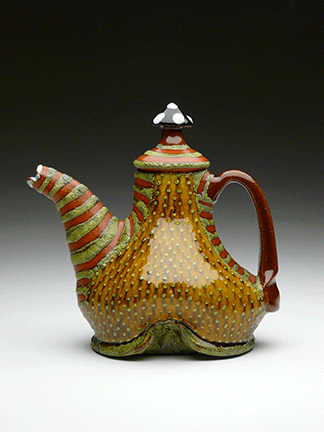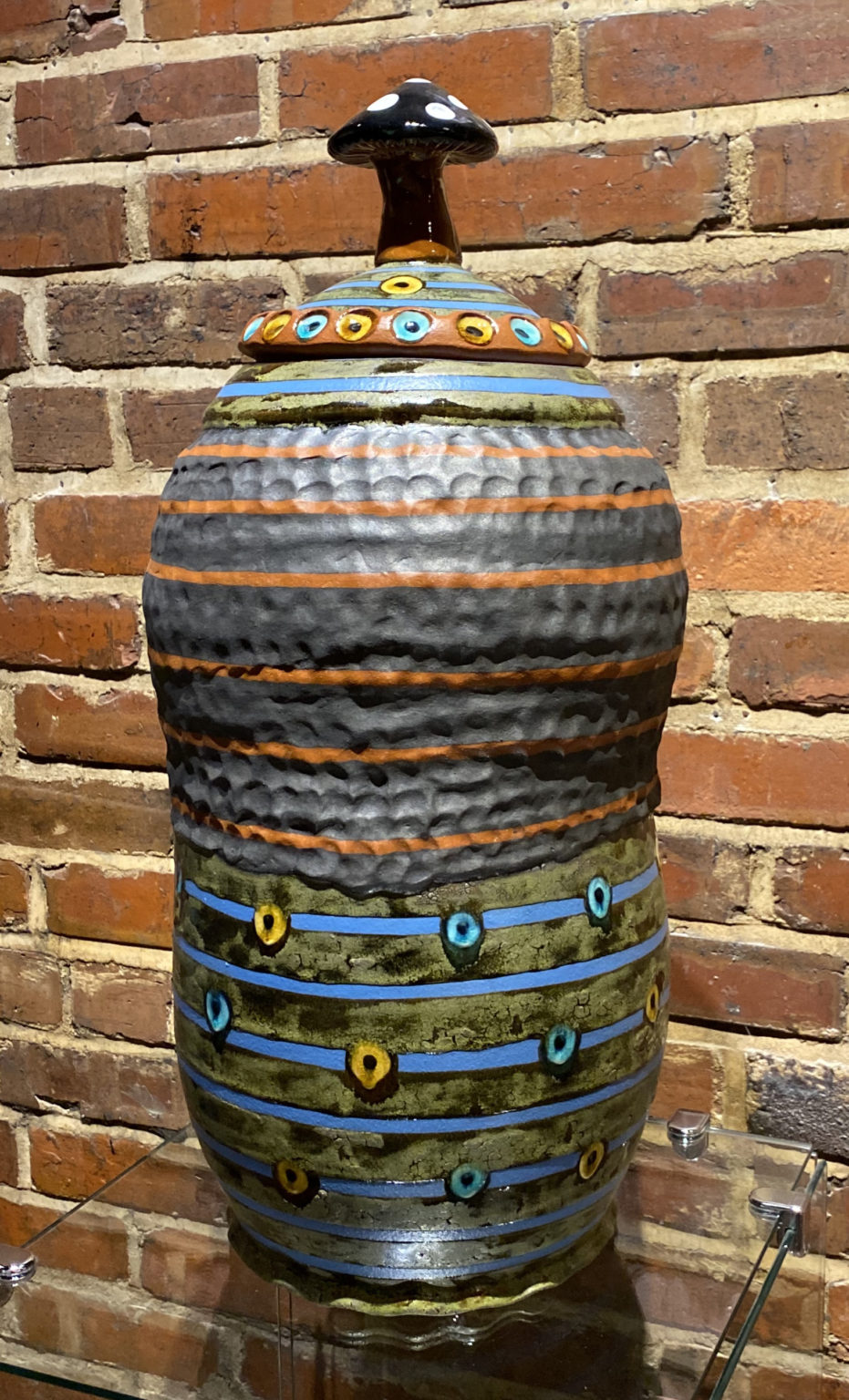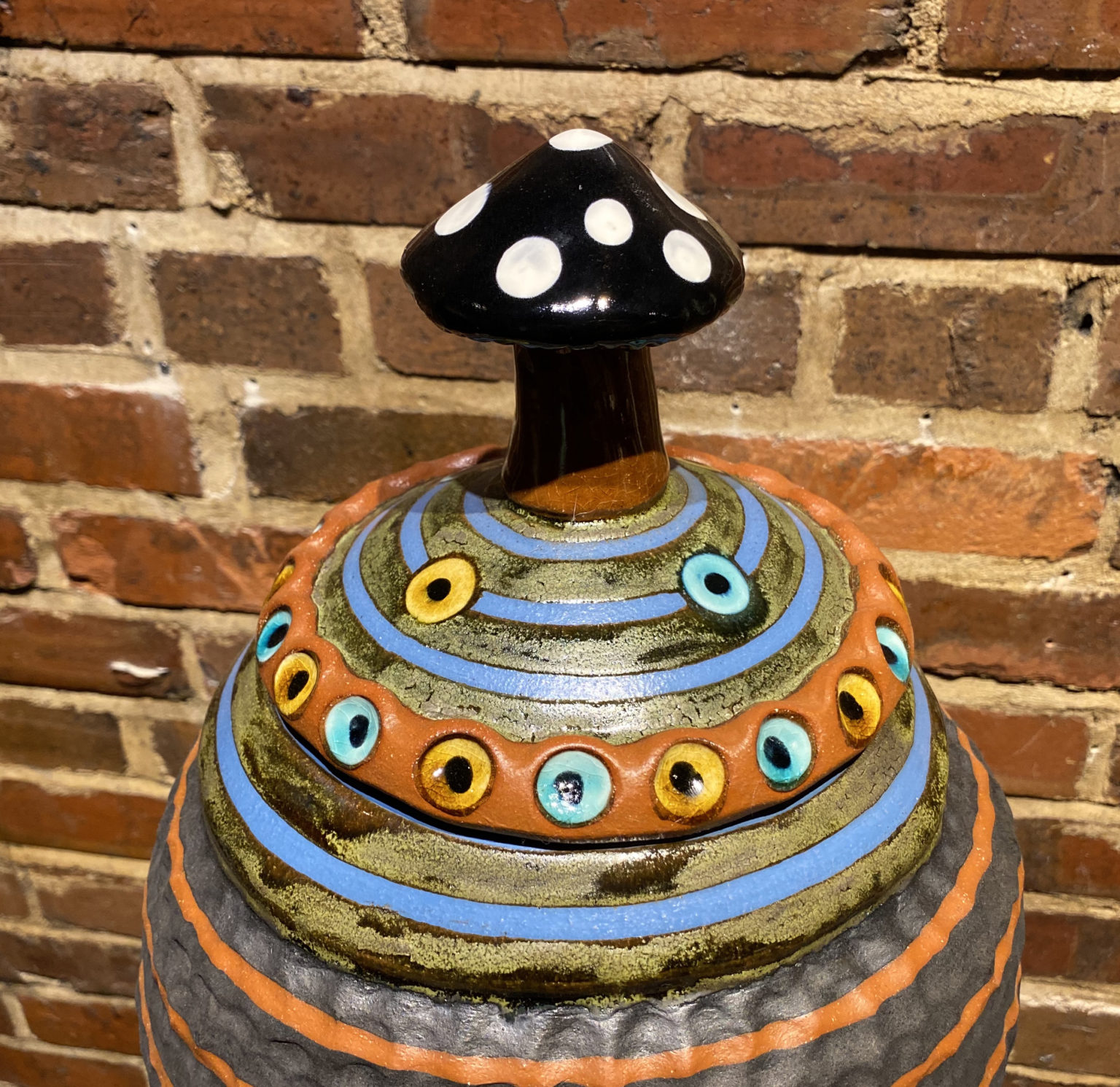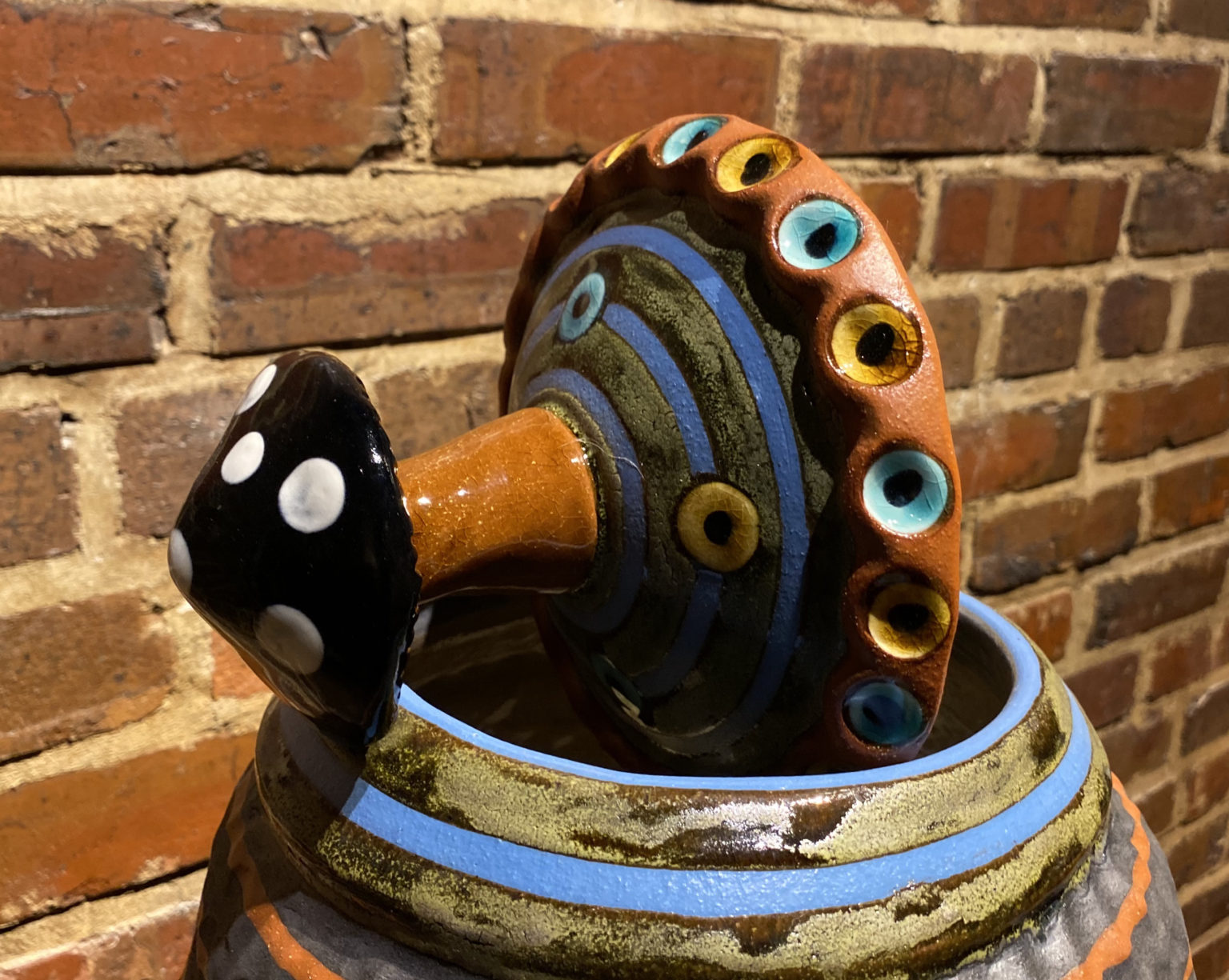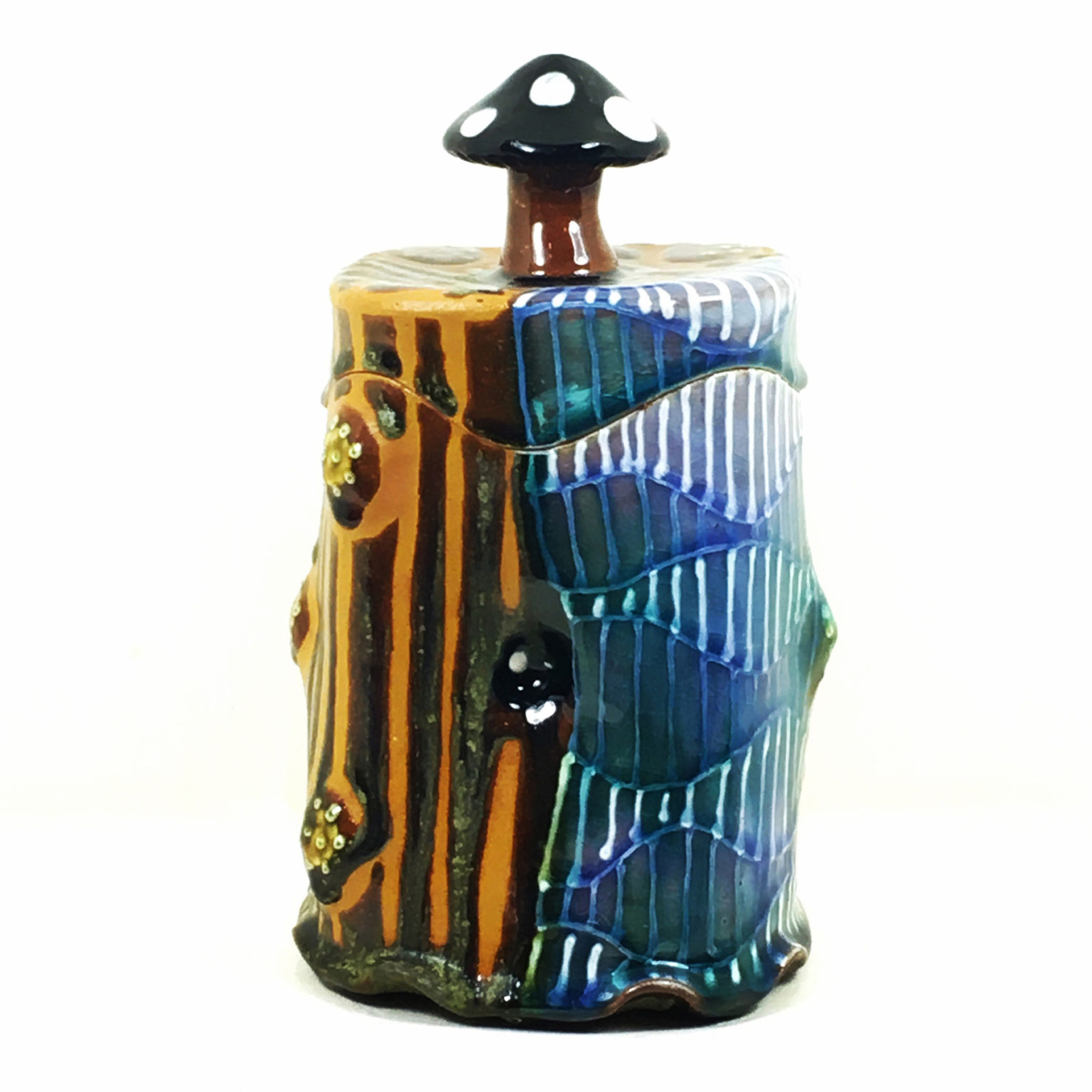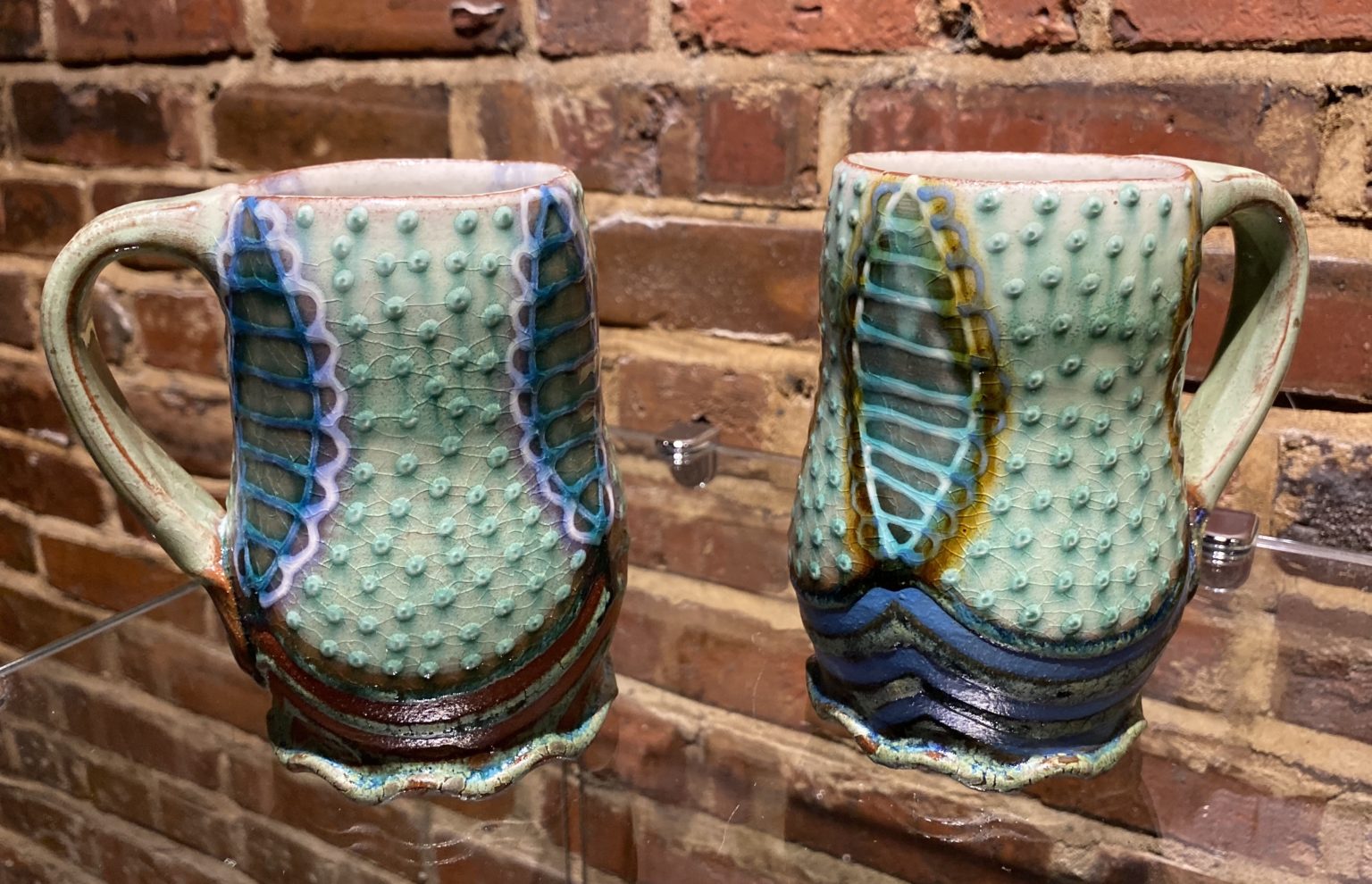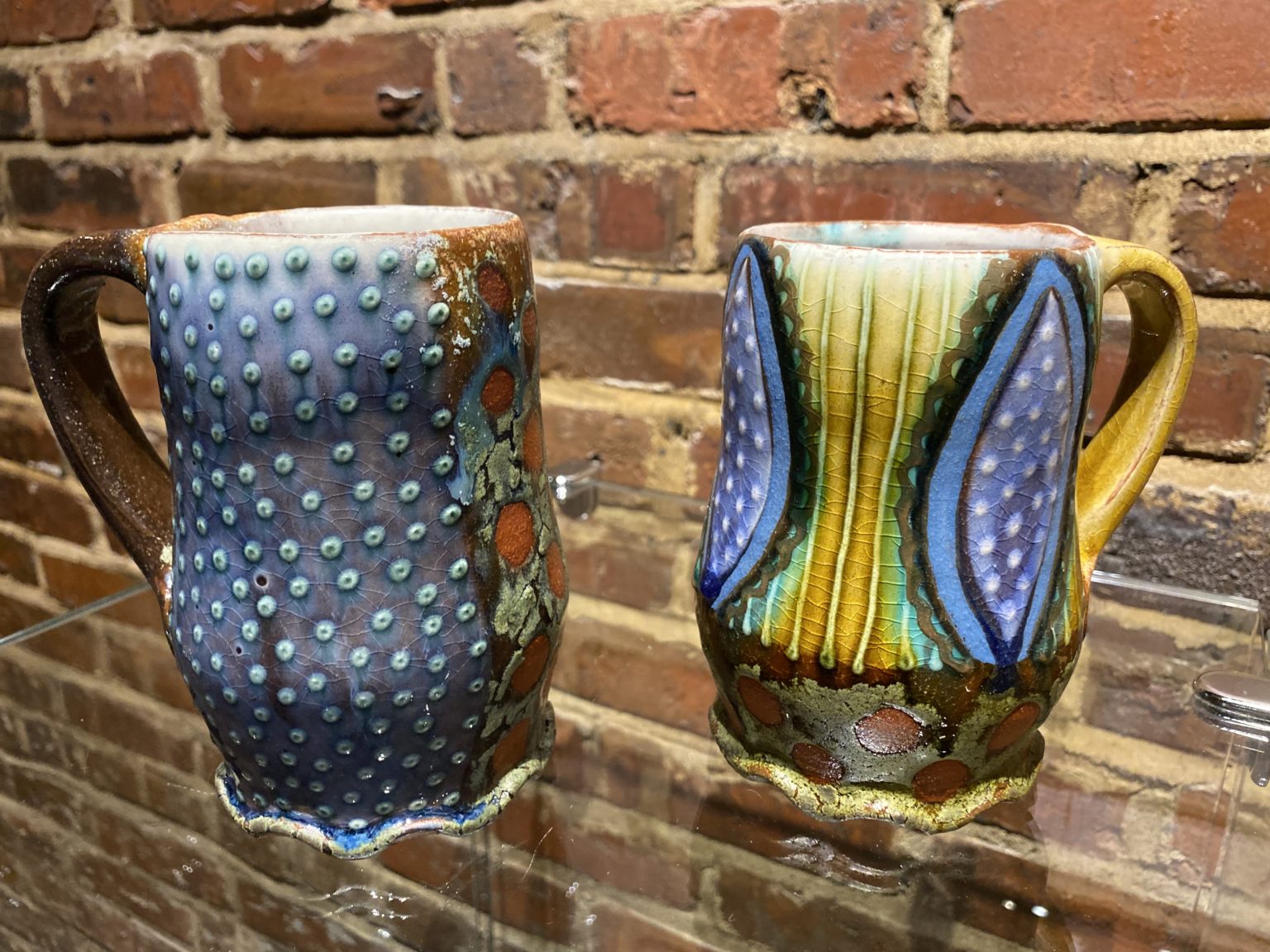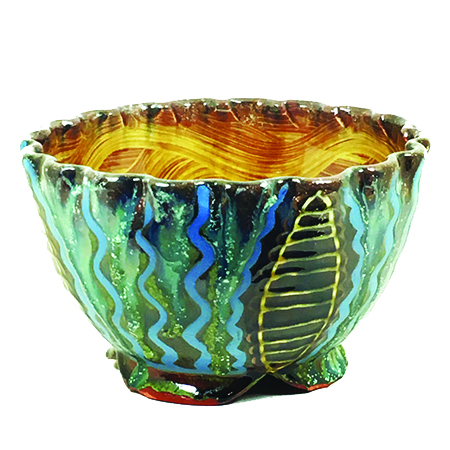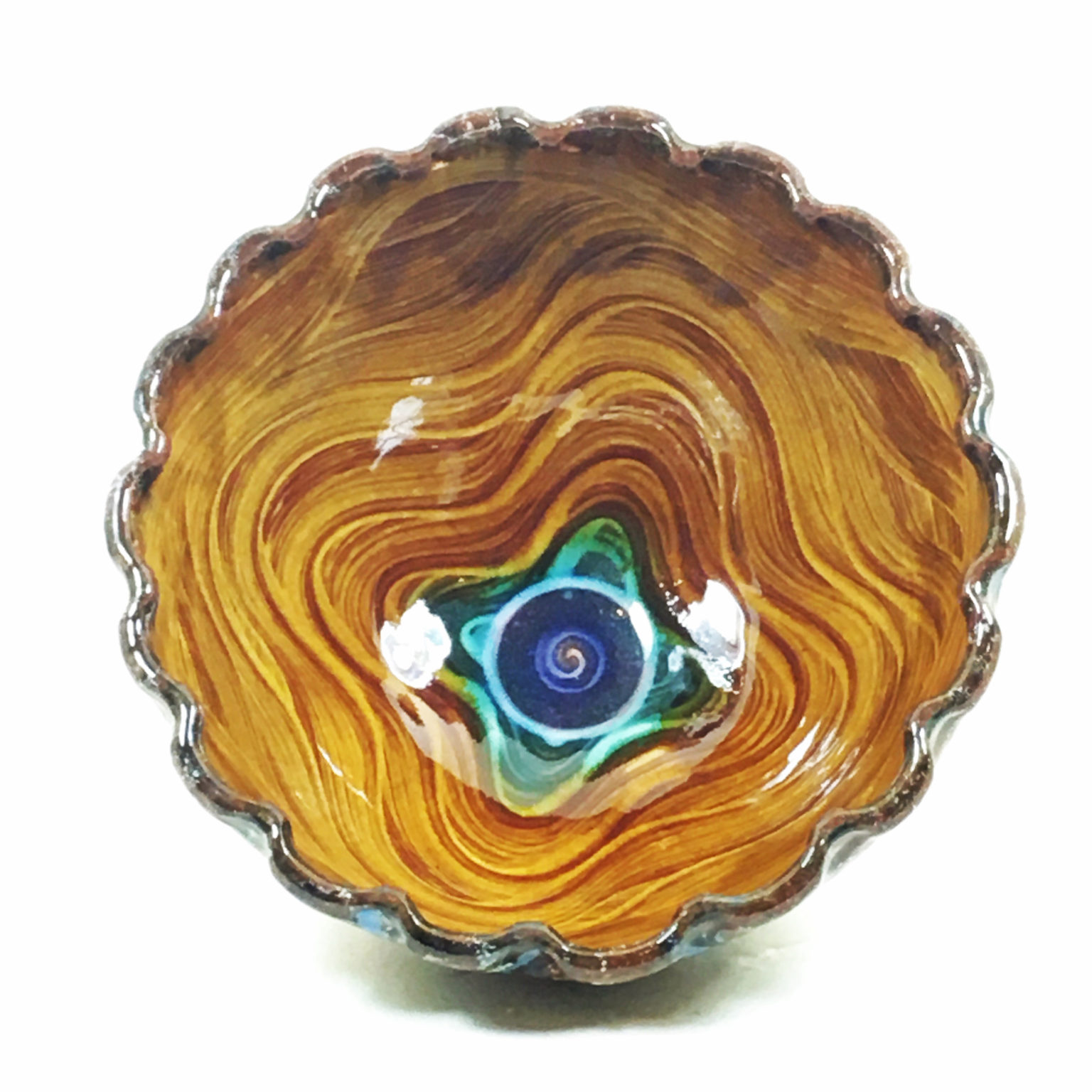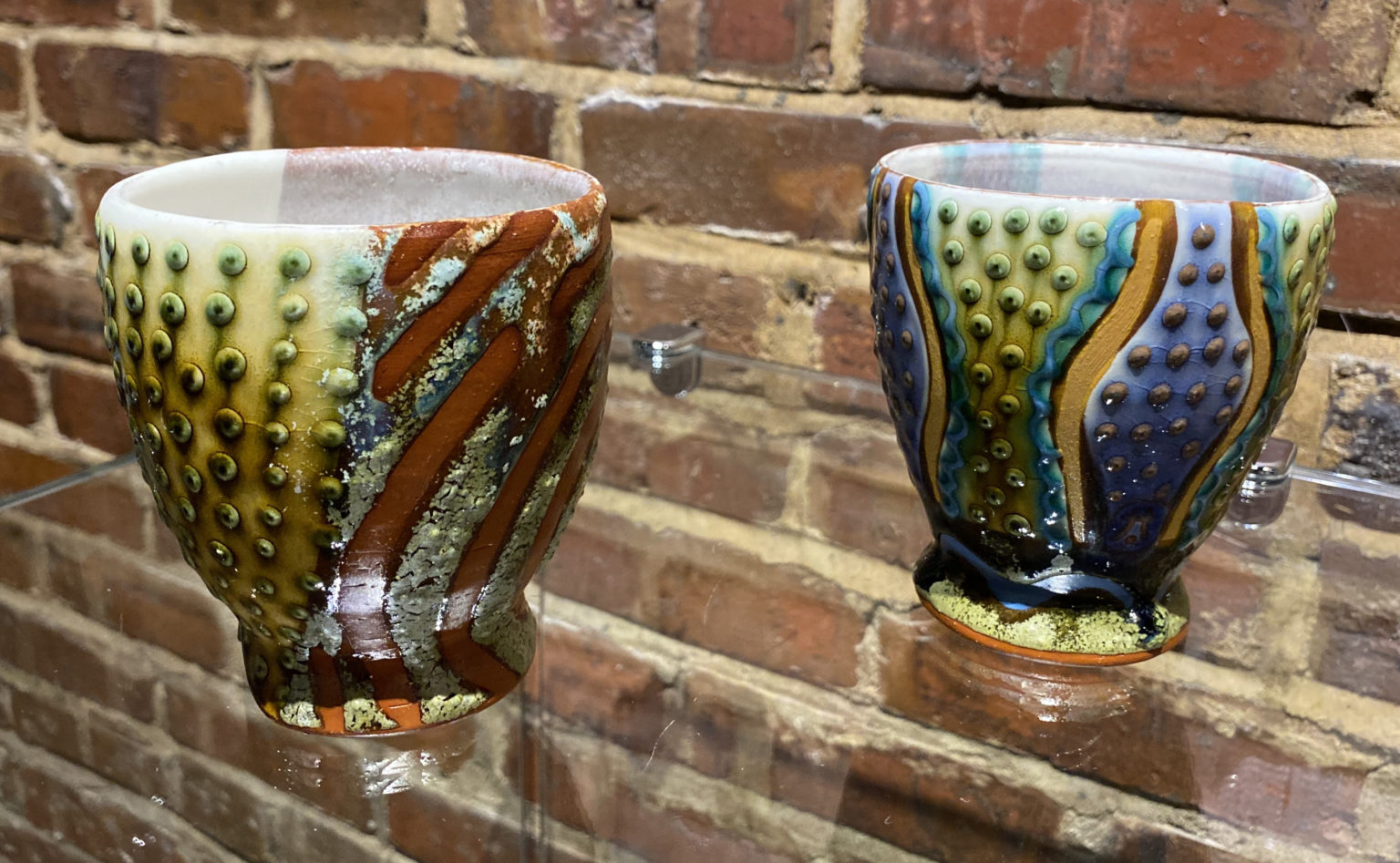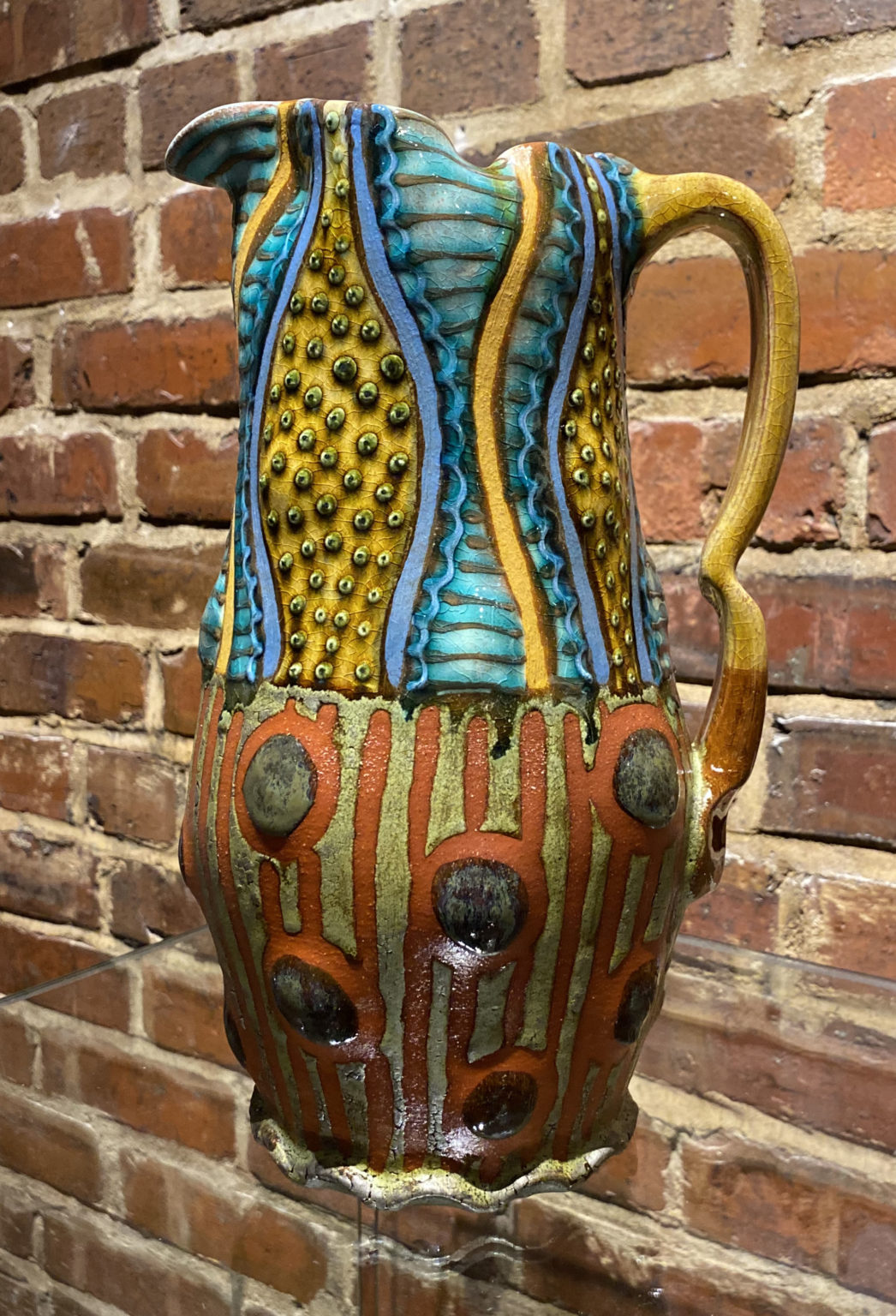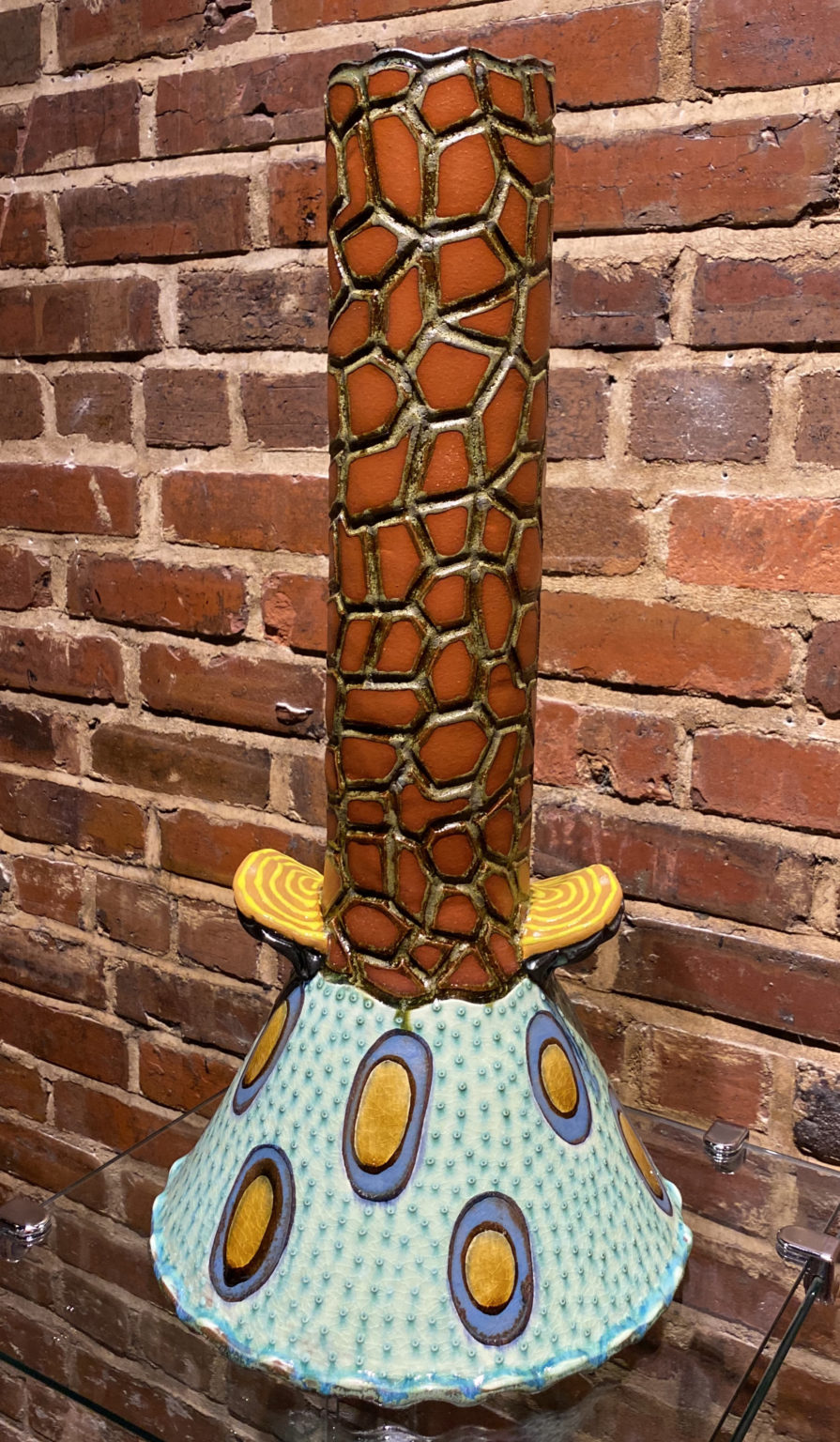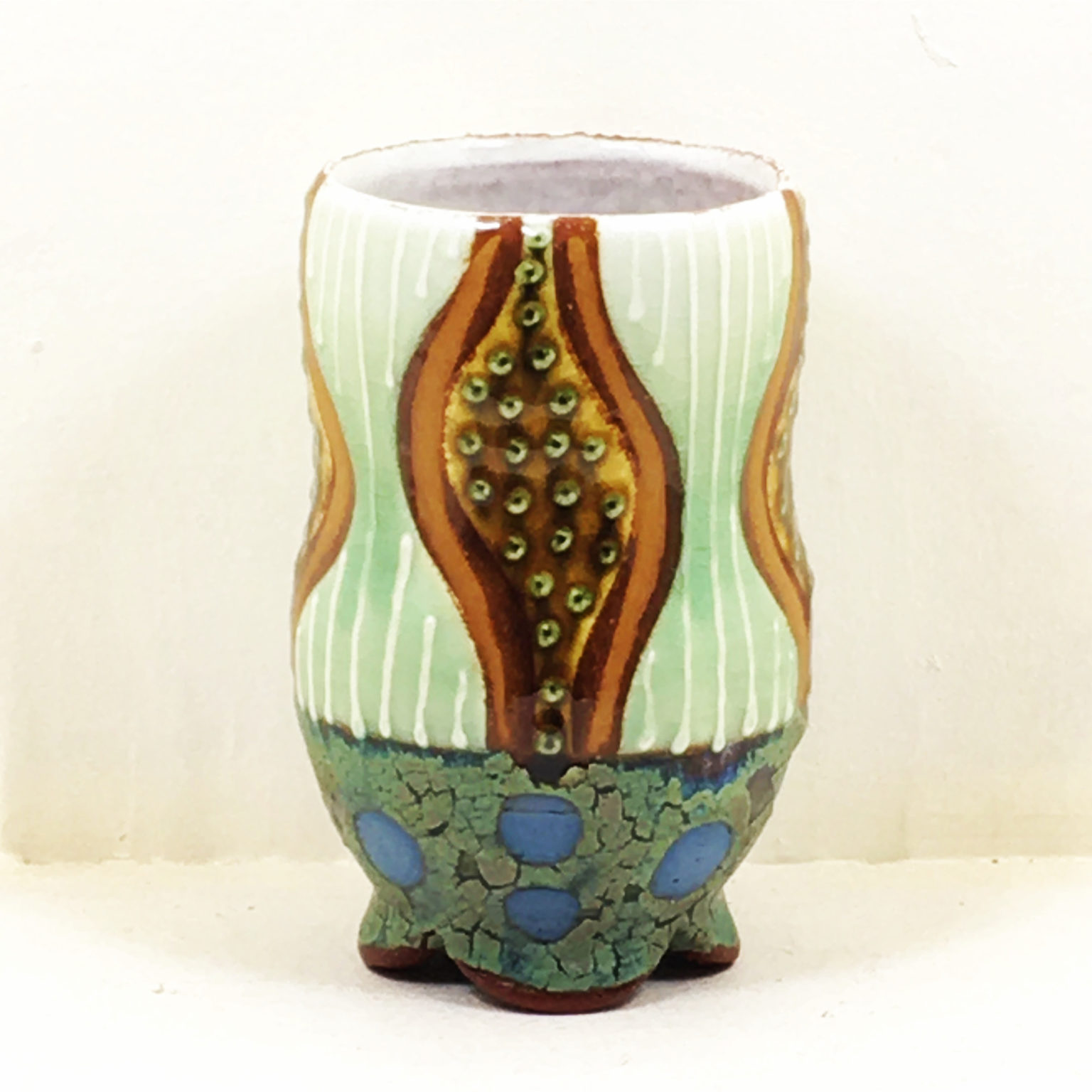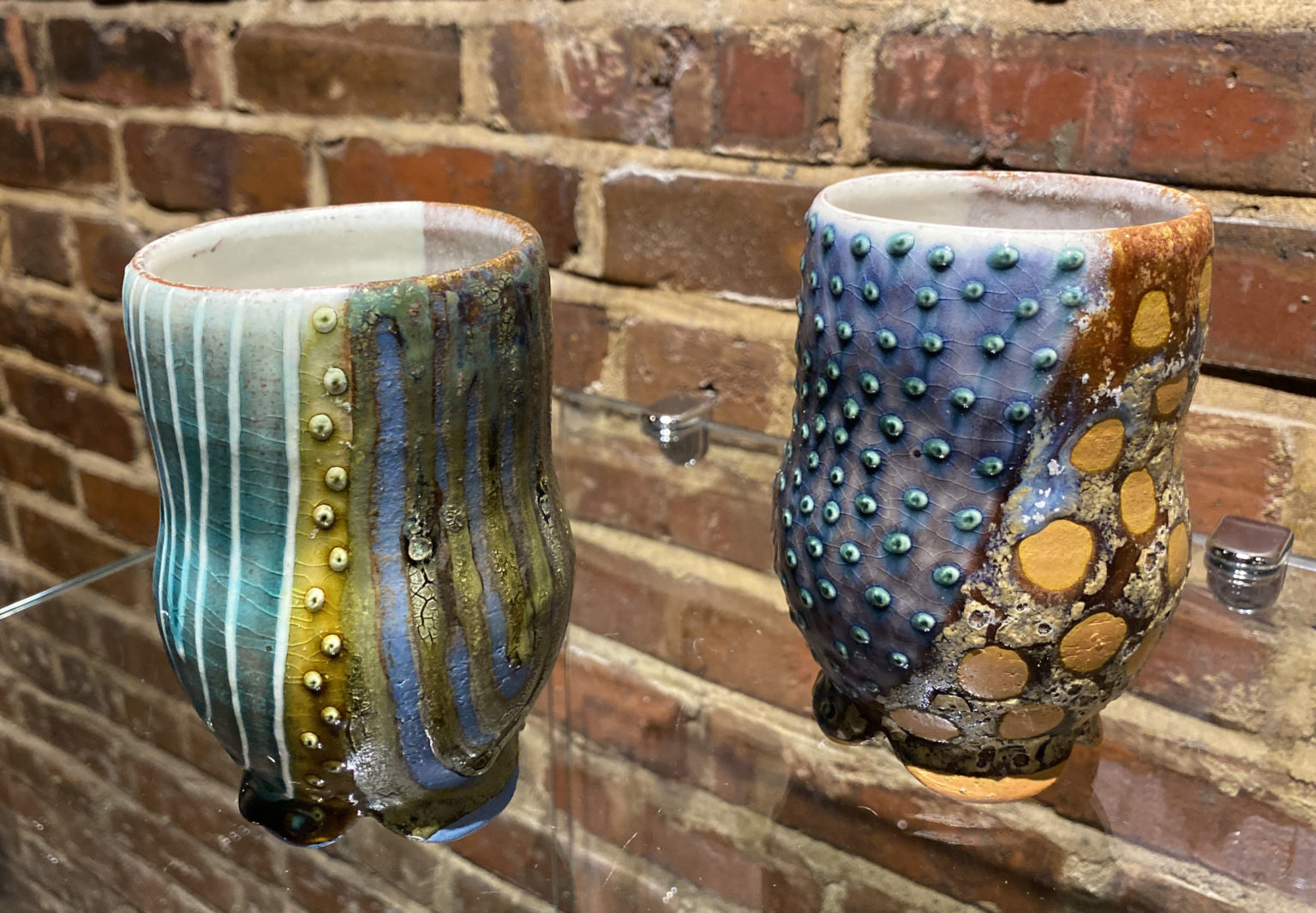RONAN PETERSON
Peg Bachenheimer, Paul Hrusovksy and Ronan Kyle Peterson combine elements of nature with pure abstraction for their three-person show Craven Allen Gallery. The gallery is open for viewing with social distancing measures in place, and the works will able to view on the gallery’s website, cravenallengallery.com
RONAN PETERSON
STATEMENT
Essentially, I am dealing with effects of agents of growth and decay and how these agents shape and embellish the surfaces of stones and the skins of trees. These agents also serve key roles in interacting with my ceramic vessels. Mushrooms, seed pods, grubs and other growths serve as knobs and handles, allowing one to remove lids and discover what might be inside or underneath a covered vessel, like lifting a rock to have insects scurry in many different directions when subjected to the light of day. The vessels are not intended to be actual representations of the trees and rocks, but abstractions and stylizations of these natural phenomena. Employing an earthy background palette stretched across textured but quieter surfaces, I wanted to upset that quiet earthiness with intense splashes of vibrant color, patterns, and glossy surfaces not commonly associated with tree bark or the rough surfaces of rocks amidst fallen leaves. I am interested in inflated volume and thick line qualities that reference comic style drawings and how that can apply to interpreting the natural world. With my ceramic vessels I hope to create a comic book interpretation of the natural world with a focus on the rocks and trees and their role in the perpetual organic comedy of growth and decay.
ABOUT RONAN PETERSON
Ronan Kyle Peterson grew up in Poplar, NC, a small community deep in the mountains of western North Carolina. He attended the University of North Carolina at Chapel Hill and in 1996 received a Bachelor of the Arts degree in Anthropology, with a minor in Folklore. He was a Core Fellow at Penland School of Crafts in 2000-2001, and has returned to Penland to teach Summer Session workshops. Currently, Ronan maintains Nine Toes Pottery, which produces highly decorative and functional earthenware vessels. His work has been featured in both Ceramics Monthly and Clay Times, and the books 500 Bowls and 500 Plates and Chargers. Recent exhibitons include solo shows at the Cedar Creek Gallery (NC) and Charlie Cummings Gallery (FL) and invitational shows at the Artisan Gallery in Northampton, MA, Worcester Center for Crafts in Worcester, MA, and the Carbondale Clay Center in Carbondale, CO.
PROCESS
I use red earthenware clay to make my ceramic vessels. Most of my work is wheel-thrown, altered while wet and assembled when pieces have dried to a leather hard state. My pots are often times coated with a white slip, or liquid clay. Often, I dip select areas in the white slip and then respond to the shape that results from the contour of the dipped pot. After the vessels have completely dried I often paint on or dip the pieces into terra sigalatta, a super refined clay slip that can help seal the work and that is very sensitive to any micro-atmospheric effects that might take place in the final firing of the work. I also add texture, color, and pattern through slip trailing at the bone dry stage. All of my work is then bisque fired in an electric kiln to around cone 06. After bisque firing my work, I then apply, either by dipping or brushing on, a myriad of shopmade and commercially produced glazes. I employ glazes that enhance the surface and carvings of my vessels or I layer glazes and wax resist areas to achieve certain textures, glaze interactions, and patterning. After a laborious glazing cycle, my work is then fired a second time in the glaze kiln to cone 03 or 1987 F. Most glazes I use are food safe, and intended for use in the kitchen and home. These glazes are durable, and can be placed in the dishwasher, however I do not recommend microwave use for any of my work. Any work that includes a non-food safe surface will be more sculptural in nature, labeled as such, or the glaze in question will most assuredly be on the exterior of the piece.
